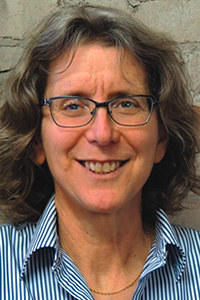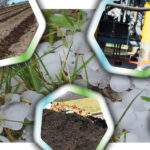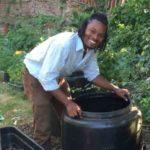
Nora Goldstein
BioCycle January 2018
In February 1993, the National Recycling Coalition (NRC), in conjunction with Novon Products, the U.S. Department of Agriculture, the University of Hawaii and the U.S. Environmental Protection Agency, held the National Source Separated Compost Symposium to develop a national strategy to promote this method of composting in order “to ensure the production of a high quality, value-added marketable end product.” The NRC and the Symposium Steering Committee Members organized the meeting based on concerns about the quality and marketability of the end products produced from mixed municipal solid waste (MSW) composting.
Notes the Executive Summary of the Symposium proceedings: “Substantial effort currently has been focused on promoting mixed MSW composting, but recent experience with this method has indicated a greater need to examine the full potential for source separated composting. Mixed MSW composting involves collecting mixed MSW, processing the material to remove varying quantities of the recyclables and unwanted inorganic materials, then composting the remaining organic fraction. Source separated composting involves collecting organic material from specific sources of generation separate from MSW and composting the material…”
It is the 25th anniversary of what we consider a “call to action” to “ensure the production of a high quality, value-added marketable end product.” At the time the Symposium was held, the organizers noted that there were nearly 3,000 composting facilities in the U.S. that composted, at a minimum, leaves. Many also composted grass clippings and other yard trimmings. Those were the early days of composting source separated food waste from households and commercial and institutional food waste generators.
Fast forward 25 years to 2018. According to BioCycle’s 2017 State of Organics Recycling In The U.S. survey, there are now 2,698 yard trimmings composting facilities, 249 facilities composting yard trimmings and source separated food scraps, and 620 operations composting multiple organics, including yard trimmings, food scraps, manure, industrial organics, soiled paper and packaging and/or mortalities. The survey also identified 11 mixed MSW composting operations. How states classify and count (or don’t count) yard trimmings composting facilities in 2017 (when our survey was conducted) versus 1992, when the “nearly 3,000” facilities were reported, leads us to guess that the total number of yard trimmings composting sites in the U.S. hasn’t changed much in these 25 years. Definitely, the number of source separated organics composting facilities has increased significantly, especially the number of sites processing food waste.
But what hasn’t changed is the relevance (and reality) of the theme of the 1993 Symposium — “to ensure the production of a high quality, value-added marketable end product.” Going into 2018, compost manufacturers — primarily those receiving commercial and residential source separated food waste — are struggling with contamination in arriving feedstocks that strain their ability to consistently produce a high quality, value-added marketable compost. The difference between 1993 and 2018 is that millions more households, institutions and food sector businesses have been trained in source separation practices, and have systems in place to facilitate that behavior.
Despite these systems and outreach and education about proper separation, contamination manages to work its way into the organics streams. There are many explanations why this happens — too many to describe in this Editorial. The severity of the problem, and the impacts it is having on compost quality, however, cannot be ignored. So by way of this Editorial, BioCycle is issuing a Call To Action to ensure production of high quality, marketable end products. Our Call To Action will be evident at BioCycle WEST COAST18, March 26-29, 2018 at the Town & Country Resort in San Diego. Visit BioCycleWestCoast.com
Please note that 10 issues of BioCycle will be published in 2018. Combined issues are March/April and November/December.









